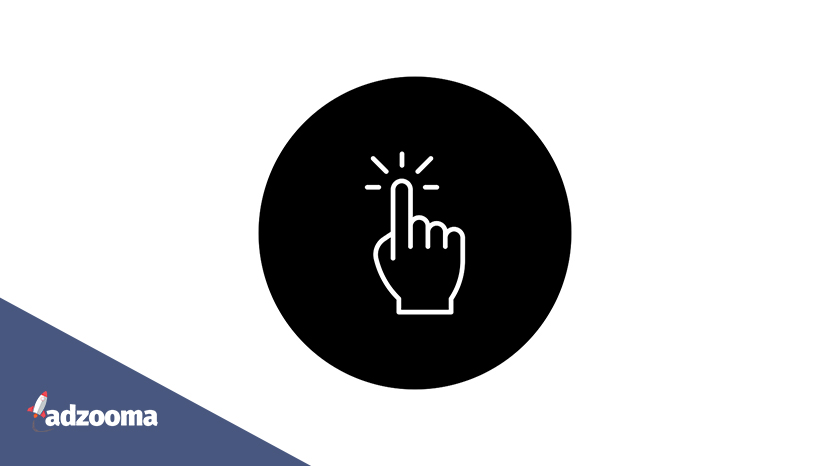“Click here” is arguably the most famous anchor text keyword. But it’s also outdated.
Unless you read the copy that comes before “click here”, you’d have no idea where you’ll be taken when you click there. As a call-to-action (or CTA), there are better alternatives.
In this article, I will look at what CTAs are and ways to improve under-performing ones.
What is a CTA?
Calls-to-action (CTAs) are special types of anchor text links that direct visitors to take a desired action on your page. They can be as simple as a text link like this:
Or take the form of a button like this:

As the name suggests, a CTA calls the visitor to perform an action. But not all CTAs are the same. Here are some brief examples of what you might want from a CTA:
- Submitting an email sign up form
- Registering for an event
- Downloading content
- Complete an order
- Sending a user to a lead capture page
- Push a user further down the conversion funnel
But not all CTAs work as well as they should and it takes time and tweaking to get them right. So let’s look at what to avoid in creating CTAs and how to improve their performance.
1. Don’t make your CTA’s difficult to read
If people can’t read your CTA, how can you expect them to click it? You need them to be accessible to all users or you run the risk of alienating a large number of potential customers.
Do consider accessibility and colour contrasts
According to AFB, 3.5% of the world’s population live with vision impairment (that’s about 253 million people). Accessibility is important to them as well as millions of people with hearing impairments and other disabilities that would affect their ability to engage with online content.
So make sure the colour of your anchor link text doesn’t clash with your button or background colour. Don’t prevent it from being readable for a screen reader. And if you use images, don’t forget to add keyword-rich alt text.
2. Don’t use complex language
Would you click on a CTA that says “Implement Posthaste!”? I know I wouldn’t. People won’t engage with a CTA they can’t understand. The same can be said for paid ads. Your headline is a CTA and you need to use your character limit effectively.
Do keep your CTA snappy and contextual
Consider plain language. It’s a way of writing that allows your audience to understand your words without further explanation. Plain language mixed with short and contextual words leaves no room for ambiguity (or, in plain language, confusion).
It’s also important to watch out for spelling mistakes. There are tools, like Adzooma’s Opportunity Engine, that can spot errors you may have overlooked from staring at the same words for too long.
3. Don’t over or undersell
Effective CTAs are all about balance. You don’t want to harass a user but you also want them to click. Aiming for either side of the spectrum ends up with the same result: no click.
Do give exactly what the visitor wants
Think about a CTA you clicked, what the anchor text was, and the reason why you click it. Examples that work for me include:
- Sign up
- Try for free
- Download
- Discover more
- Join today
- Our work
- Claim your free X
A lot of CTAs depends on the strength of actionable copy but brand awareness can go a long way. For example, Netflix CTAs would perform better than a video streaming startup on reputation alone.
4. Don’t fill your page with CTAs
Imagine a page full of CTAs that all read ‘click here’. You’d get confused about what you were clicking and why. Now picture a page full of different CTAs, possibly in different colours and different text. It’d be a sensory overload. And don’t forget mobile devices – it’s not a good idea to fill a small screen with loads of buttons.
Do place your CTAs strategically
Less is more when it comes to CTAs. The more you use, the more it appears you just want clicks rather than providing users with helpful information. Let your copy do the heavy work so the CTA can feel like a natural progression through the funnel.
5. Don’t link them to your home page
Avoid linking your CTAs to your home page. Whilst there are exceptions (e.g. a brand awareness for social media campaigns), your aim should be to send visitors to landing pages that can convert quickly. If users start on the home page, they may browse different pages and not the one you want them to visit.
Do link them to purposeful landing pages
If you want visitors to fill a form for a free downloadable white paper, sending them to your home page to find it themselves will kill your conversion rate. That’s why you should create a bespoke landing page with purposeful copy and an effective CTA button/link.
Also, don’t default to using “Submit” for forms. It might seem strange as, if they’re filling a form, they should know why they’re submitting their details. But by using a phrase like “download your free eBook”, it will remind them why they’re filling the form and entice them more knowing what the end goal is.
6. Don’t overcomplicate the design
Do you need jQuery animation, CSS animation, and SVG gradients for a Download CTA? The answer is no. Again, less is more, and in many cases, you can get away with a simple text link.
Do keep your CTA lightweight
There’s nothing wrong with using JQuery, CSS, or SVGs but consider things like page load speed for the former and ease-of-use for the latter two. Of course, a single CTA won’t cause significant lag but if there are loading issues already, making your CTAs more lightweight can shave off a few seconds overall, especially if you’re only loading one library for the sake of one CTA. It’s recommended that pages display content in no more than 2-3 seconds before users begin to abandon sites. And if you use a button, think about your use of negative space–don’t cramp your text into a small space.
7. Don’t stick to the same formula for every CTA
“Click here” stopped being effective because it wasn’t meaningful and it was formulaic. The CTA examples above might not work for you, so it’s important to A/B test your CTAs.
Do use tools and split testing
There are a variety of CRO tools that can help assess the performance of CTAs, including split testing tools. Changeable factors include:
- CTA text
- Colours
- Whether to use a button or a text link
- Animation or no animation?
- CTA placement
- CTA size
- CTA shape
We have a great selection of 10 free CRO tools to try and test your CTAs.
Don’t struggle—do use Adzooma
CTAs are small in size but large in importance. They come in many forms and they’re the last port of call for a user – either they click on them and they don’t.
One way to enhance the performance of your CTAs and your associated landing pages is to use a platform like Adzooma. With the Opportunity Engine, you can work through a wide range of opportunities to improve your ads and pages including:
- Check Low Performing Landing Pages
- Improve Landing Page Mobile UX
- Fix Broken Link
- Fix Landing Page
- Add Site Links Extension
The tool use machine learning, your campaign data, and best practices to offer optimal suggestions.
Now, don’t read anymore—do try Adzooma for free today.




